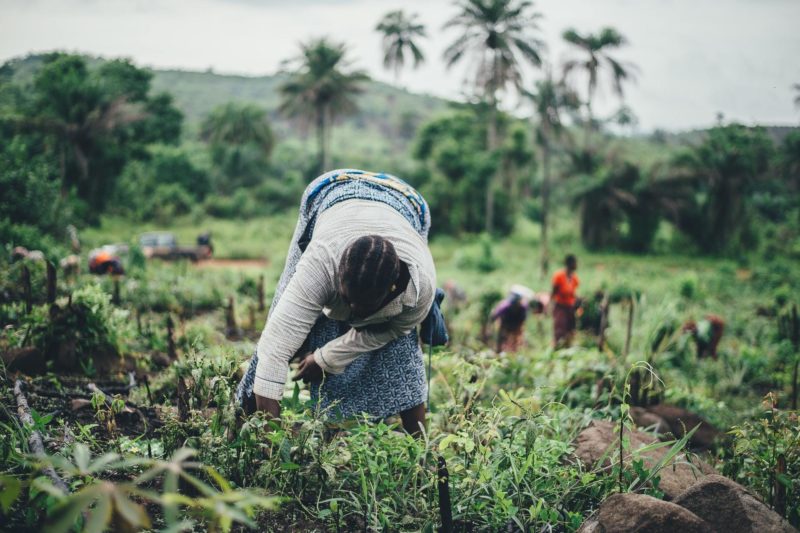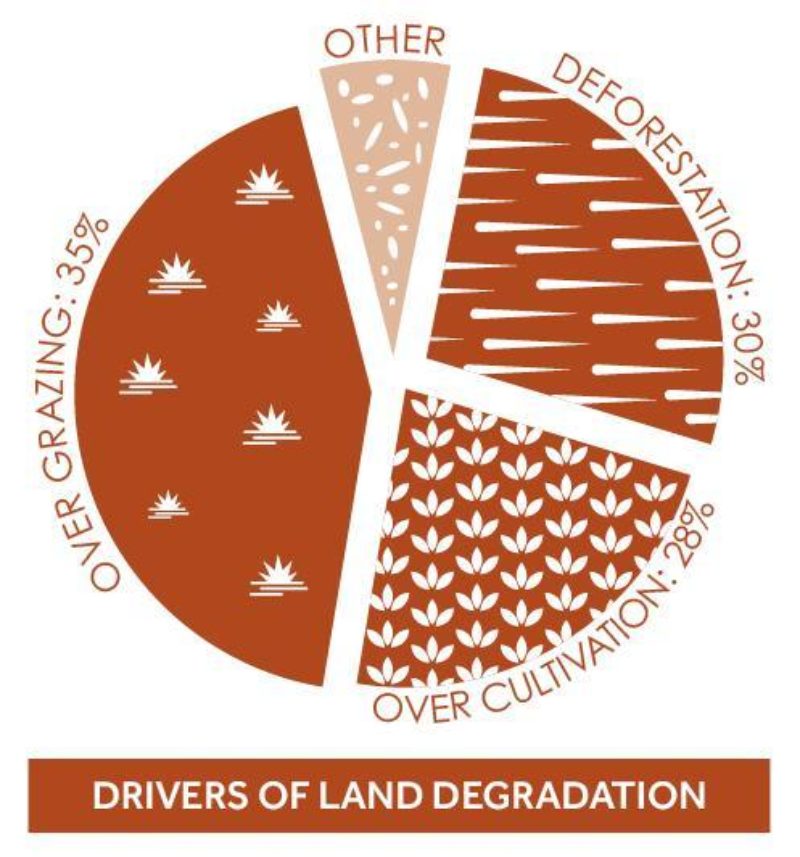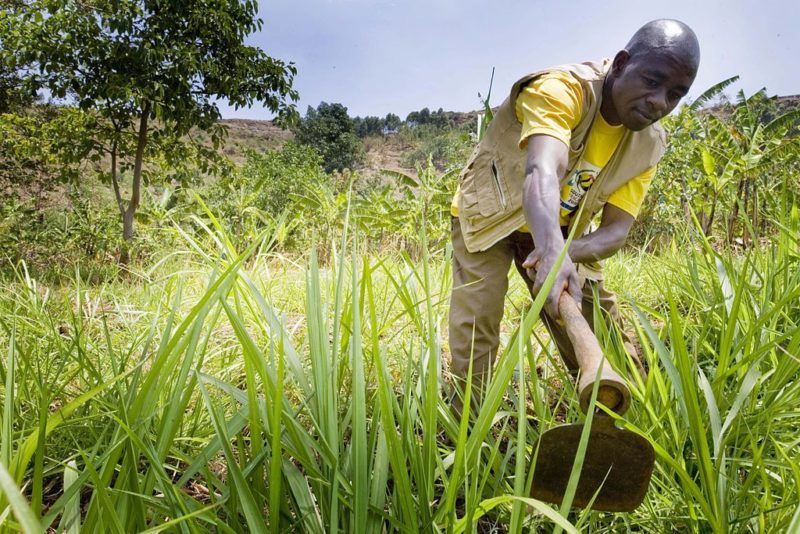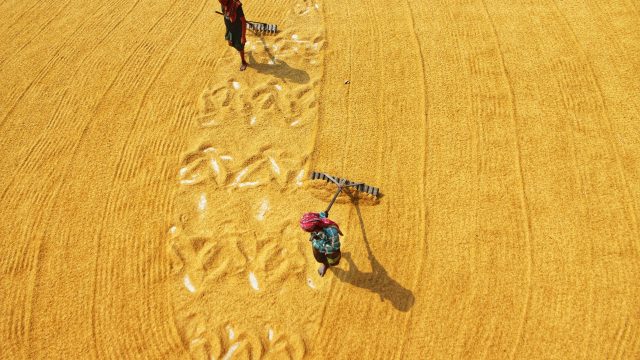Five insights on shifting local economies to work for nature
The transition to regenerative agriculture in Africa: five insights on shifting local economies to work for nature

The GEC Insights series is a new curated collection of online articles at the intersection of environment and economics, each written by leading thinkers from the worlds of business, government and civil society. Part of our Economics for Nature project, they bring together diverse perspectives to answer the question: how can we re-design our economies to protect and restore nature?
COVID-19 has shown once more that the economy and the protection of nature go hand-in-hand. When people are pushed to the edge of survival, they’ll do what it takes to make a living, and often that means the destruction of natural resources. Immediate necessity trumps concern for the ecological future. A long-term strategy to preserve the natural resources in Africa won’t come without a solid framework for economic development.
For the past seven years, Grounded has been working in African landscapes developing companies that support the switch to high-value crops that can be processed locally. They serve another purpose too: these companies promote a transition to regenerative agriculture, which itself ensures the protection and restoration of critical landscapes.
From our experience, there are five key insights we’d like to share.
1. Large-scale landscape rehabilitation requires agricultural transformation
Unsustainable farming practices cause the majority of land degradation issues the world over. There’s no way around it: human activity is driving soil destruction. The solution must address the human concerns fuelling the destruction: degraded landscapes cannot be restored without a sustainable strategy for the farmers living in those landscapes.
For change to be positive on the whole, and for generations to come, agricultural practices must be in harmony with nature. Since most of the world’s poor are farmers, large-scale agricultural transformation has the potential to lift millions of people out of poverty. They have the chance to make an enormous impact, and they stand to benefit tremendously.

2. Stop limiting smallholder farmers to this ultimate fate
It is vital to rural development in Africa that we broaden our thinking. There is no reason why small-scale farmers cannot grow into successful commercial farmers in the future. Existing programs often narrowly focus on improving crop yields for limited-production farming systems. Individuals receive small nudges of help and incremental benefits or become reliant on handout cycles.
Farmers understand this cycle all too well. They have seen various ‘projects’ come and go, accompanied by all-too-familiar signs of the NGOs that implement them; as food aid waxes and wanes, so does the confidence in an external solution. This dependency loop is hard to break when you’re living day to day.
When we first began partnering with the Peace Parks Foundation in Zambia’s Simalaha Conservancy, we worked with over 700 farmers spread across a 180,000 ha landscape. Our vision might have been noble, but our impact was ultimately shallow and it wasn’t possible to solve the myriad individual farming challenges and bring significant economic transformation. The farms were not homogeneous, neither were the farmers.
At the start of 2020, we created the Simalaha Incubator Farm Company (IFC) with five to ten farming families on five hectares of contiguous land. Before we attempt to transform the culture of farming in the Simalaha, we’re going to get it right here first, doing everything from detailed soil profiling and careful crop selection, to investing in irrigation infrastructure and, of course, working with the farmers themselves. With operational setbacks linked to the global pandemic, operations are planned to resume in 2021.
3. Move away from the urgent, towards the high potential
We believe the key to success requires a shift in focus—away from the urgent, toward the high potential—applying insights and lessons, approaches and resources to landscapes on the verge. The next 20 years will dictate the fate of the world’s most vulnerable areas, many of which possess great biodiversity value and promising economic/agricultural potential, and have not yet entered the spiral of degradation that is so difficult and costly to reverse. Much can be gained by acting now.
Many donors and governments favour projects in the most impoverished and degraded landscapes precisely because of their conspicuous severity. We’ve been there. Working with farmers in the remote Baviaanskloof in South Africa, where depleted soils, frequent droughts, and limited connectivity cause producers to openly admit to the struggle of farming there, we stumbled through a web of logistical, ecological and interpersonal challenges. While regions like the Baviaanskloof need resuscitating, their characteristics make it hard to grow medium-sized agri-businesses that can expediently create the economy that prevents them from sliding into dire straits. When donors and governments focus on areas with higher economic potential—landscapes on the verge—the chance of succeeding, and therefore the potential impact, is much higher.
“ Sustainable agriculture isn’t just about food security. Transformative farming can restore ecosystems, mitigate climate change, reduce malnutrition and kick-start the economy on a path to middle-income growth.”

4. Farm with nature, not against it
Globally, there is a growing understanding that the effects of farming intensively, with heavy ploughing, pesticides and artificial fertilizers, have long-term costs for the fertility of our soils and the nutritional quality of our food. On the other hand, regenerative farming, which aims to improve soil health while successfully capturing carbon, has shown tremendous potential and uptake over the past few years.
Working towards sustainable agricultural development in Africa, we have the opportunity to get right what we got wrong elsewhere in the world: instead of imposing brutish monocrop systems and fighting nature, we can leverage nature to improve our yields. While the benefits of regenerative systems are not instantly gratifying, they bear better fruit in the long run. But the shift isn't easy, it requires significant initial investment and a change in mindset, which considers a bigger overall picture of farming for generations and the health of the landscape—neither of which small-scale farmers can afford without help.
Seven years of partnering with farmers in the Baviaanskloof taught us a lot about the long-term dividends of regenerative agriculture. Owing to decades of taxing farming practices like overgrazing and diverted waterways, this landscape had been pushed to the brink; it would take time to restore. We could not address the farmers’ immediate economic struggles without first rehabilitating the soils and we could not restore the soils without buy-in from the farmers. Their belief that the costly initial investment of effort and capital would be worth it. By implementing practices that could put depleted nutrients back into the soil, the farmers began to immediately restore the ecosystem and the start of wholesale revival of this landscape.
5. Focus on actual value and true economic potential (not just revenue)
Too often programs aimed at supporting poor farmers focus on increasing yields of a main crop—usually a staple food like maize or cassava. Farmers typically grow these crops to eat, selling whatever is left once they’ve fed their families. This might seem like a common-sense approach, but because everybody grows these crops, and often governments subsidize them to keep them cheap and affordable, they are worth little on the market. Focusing instead on crops that can generate higher value through careful tending (and, ultimately, their higher quality) allows small and medium-scale farmers to be economically competitive. This is what drives cash flow into farmers’ hands.
Again, our experience working with farmers in Zambia served as a prudent lesson. In combination with staples like maize, sorghum, and cowpeas, we encouraged farmers to plant peanuts with the hope of adding value to the end-product through grading and processing. But even if the crop itself was successful (which it wasn’t for a host of reasons, including extreme weather conditions), its economic benefit to the farmers—and, ultimately, the project of regenerative agriculture—was limited. By introducing higher-value species, we help recover the costs of farming in this remote landscape, from the transport requirements to the infrastructure needed to get harvests to buyers, all while getting farmers a good return.
We know our natural resources are precious, and that our lives depend on them. We also know that when we suffer, so do our landscapes. Sustainable agriculture isn’t just about food security. Transformative farming can restore ecosystems, mitigate climate change, reduce malnutrition and kick-start the economy on a path to middle-income growth.
A strategic transformation of African farming that focuses on good opportunities, nurturing talent, and regenerative agriculture can get at the root of some of the world's biggest challenges, and finally, stimulate the holistic change we need.
Thekla Teunis & Gijs Boers, co-founders of Grounded, an organisation that seeks to restore African landscapes by giving power to farmers and consumers to invest in their soil, the health of their landscapes and in each other.
Photo credits:
Annie Spratt on Unsplash
Kate Holt/AusAID / CC
The Green Economy Coalition believes that dialogue and discussion are cornerstones of effective policy-making. Therefore we publish articles from a broad range of contributors, covering a wide range of views. The views expressed by our guest authors do not necessarily reflect the policy or positions of the GEC; furthermore, since our coalition and our contributors are reflective human beings navigating a complex world, our views are subject to change over time.


